Phyto Power’s Wildcrafted Alaskan Rosehip
|
Dear Friends,  Recently I was detailing a doctor on our Phyto Power, and while going over its ingredients, he asked me two important questions: First, how much phytochemicals are in the blueberry, rosehip and dandelion of this product? Secondly, how can a capsule containing solely the whole berries and herb of these three items have enough phyto nutrient quantity to make a therapeutic impact? Good questions and I will devote this newsletter to our answer. First let’s look at the contents within each capsule of which there are 60 capsules in a bottle. Per capsule there are 100mg of four species of blueberry consisting of the whole berry with a small percetage of ‘tonic’ leaves and stemlets. There are 200mg of three species of the whole rosehip with pericarp, seeds, hairs and petal base, and finally there are 200mg of four species of dandelion containing the entire herb in flowering phase which consists of the leaves, roots, root bark and flowers. Of course the sourcing of ones raw materials is incredibly important and we take great care at Bioimmersion to develop relationships with farmers whose farming methods and locations yield produce that is packed with high actives. In the case of our Phyto Power the blueberry, rosehip and dandelion come from Alaska, and they are wild-crafted. The nature of the Alaskan environment with almost continuous sun during the growing season while the ground (the soil) even in summer remains cold, creates a growing environment in which plants produce high amounts of phyto-chemicals to protect themselves—the very actives that have therapeutic benefits for us. Let’s look at each one.
When we look at the catechins specifically the difference is 2 to 1 in favor of the Alaskan Rosehip, with the Alaskan Rosehip containing in mg/g:
While the Dog Rose contains in mg/g:
The total in mg/g is 141.20 for the Alaska Rose and 70.20 for the Dog Rose. The rosehip has everyone of the catechins except EGCG which you find in tea. Regarding the Organic Acids comparison in mg/g: Alaska Rosehip
Dog Rosehip
The total difference in mg/g between the Alaskan and the Dog is 59.62 to 6.01. Let’s compare the difference in Flavonoids, again in mg/g: Alaska Rosehip
Dog Rosehip
In summary there is 17.40 mg/g of the Alaska to 11.27 mg/g of the Dog. Now let’s compare their quantitative differences in mg/g of the Vitamin content: Alaska
Dog RoseHip
The total are 26.21 mg/g of the Alaskan Rosehip to 10.31 mg/g of the Dog Rose. Regarding the Carotenoids (Lycopene, b-Carotene, Lutein and Zeaxanthin) in mg/g: Alaska Rosehip
Dog Rose
The total 6.42 Alaskan to 4.70 Dog. You can see in the above picture the refractance dried rosehip flakes that we mill into a powder for encapsulation. In the coming weeks we will look at the important active ingredients within the Alaskan blueberry and the dandelion. But, as you can see with our rosehip, this produce is quite simply loaded with actives. Now in regards to the second question, is there enough quantity in a capsule to make a therapeutic difference, the answer is absolutely. Just consuming two capsule a day would be the equivalent of eating 6 whole rosehips (pericarp and all), a small handful of blueberries and a salad made up entirely of dandelion. Keeping our focus on the rosehip, the pericarp (the petal base) and the seeds are very bitter and astringent, but they are literally packed with catechins, and consuming a small amount can go a long ways therapeutically. According to Norman Hollenberg, professor of medicine at Harvard Medical School, epicatechin can reduce the risk of four of the major health problems: stroke, heart failure, cancer and diabetes. He believes that epicatechin should be considered essential to the diet and thus classified as a vitamin (Science Daily March 12, 2007; Int. J. Med. Sci. 2007, 4:53-58). So as you can see there is so much to consider therapeutically here. In regards to the rosehip, not are there catachins, but there’s the caratenoids, there’s ellagic acid, there’s Vitamin C , and so much more. We love our Phyto Power, consider taking one to two capsules daily. Sincerely yours, Seann Bardell Clinical Note: What is the Therapeutic Foods Paradigm? Our bodies are so bombarded with pollution, pathogens and stress that they desperately need to be fed real food, sustaining food, energizing food, organic food with high actives. Even if we eat seven servings of fruits and vegetables a day, it’s good but it is not enough, we need powerful organic food, food that doesn’t add more pollutants to our body burden, but food that impacts our bodies therapeutically and makes them strong. Here is the link to read further about the Therapeutic Foods paradigm. Also, read about the World Today, the reason we need to fight for a clean environment. Ural Owl / Strix uralensis: The Ural owl is one of the larger members of the wood owl family. Found primarily in loose, mature, mixed forests from Scandinavia east to Japan, the Ural owl is named for the mountains that share much of its range. Like most wood owls, the Ural owl has a large, dome-shaped head which supports the large facial disks used for enhanced hearing ability. The diet of the Ural owl consists largely of small mammals. (From The Center For Birds of Pray.org)
|
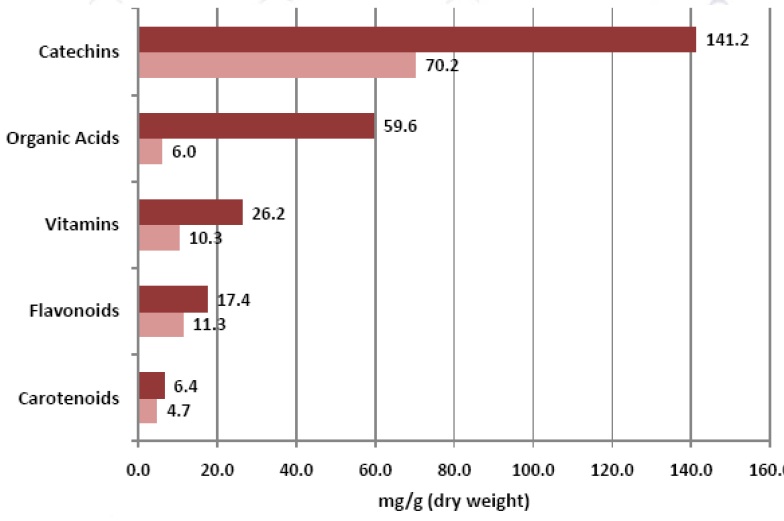 When it comes to rosehip, the European Dog Rose (Rosa canina L.) has been considered to be the most potent and is used as the standard by which others are measured. As you can see in the bar graph nutrient comparison of the wild crafted Alaska Rosehip to the Dog Rose, the Alaskan produce is much more potent (with the darker red being the Alaskan and the lighter red the Dog Rose).
When it comes to rosehip, the European Dog Rose (Rosa canina L.) has been considered to be the most potent and is used as the standard by which others are measured. As you can see in the bar graph nutrient comparison of the wild crafted Alaska Rosehip to the Dog Rose, the Alaskan produce is much more potent (with the darker red being the Alaskan and the lighter red the Dog Rose).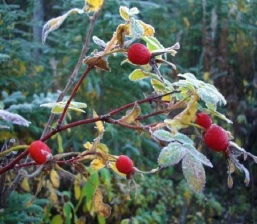 72.05 catechin
72.05 catechin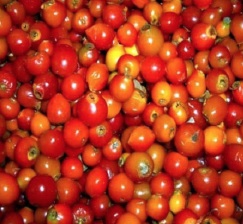 48.30 Ellagic acid
48.30 Ellagic acid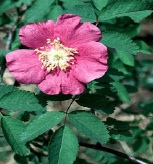 10.50 Quercetin
10.50 Quercetin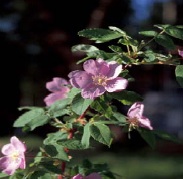 25.00 Vitamin C
25.00 Vitamin C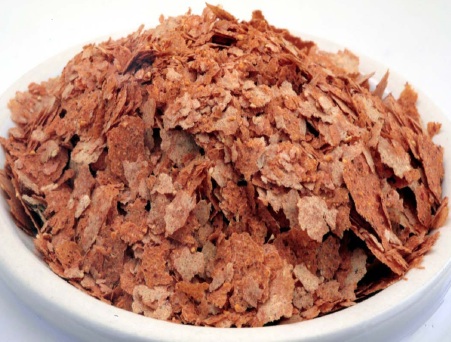 4.89 Lycopene
4.89 Lycopene
